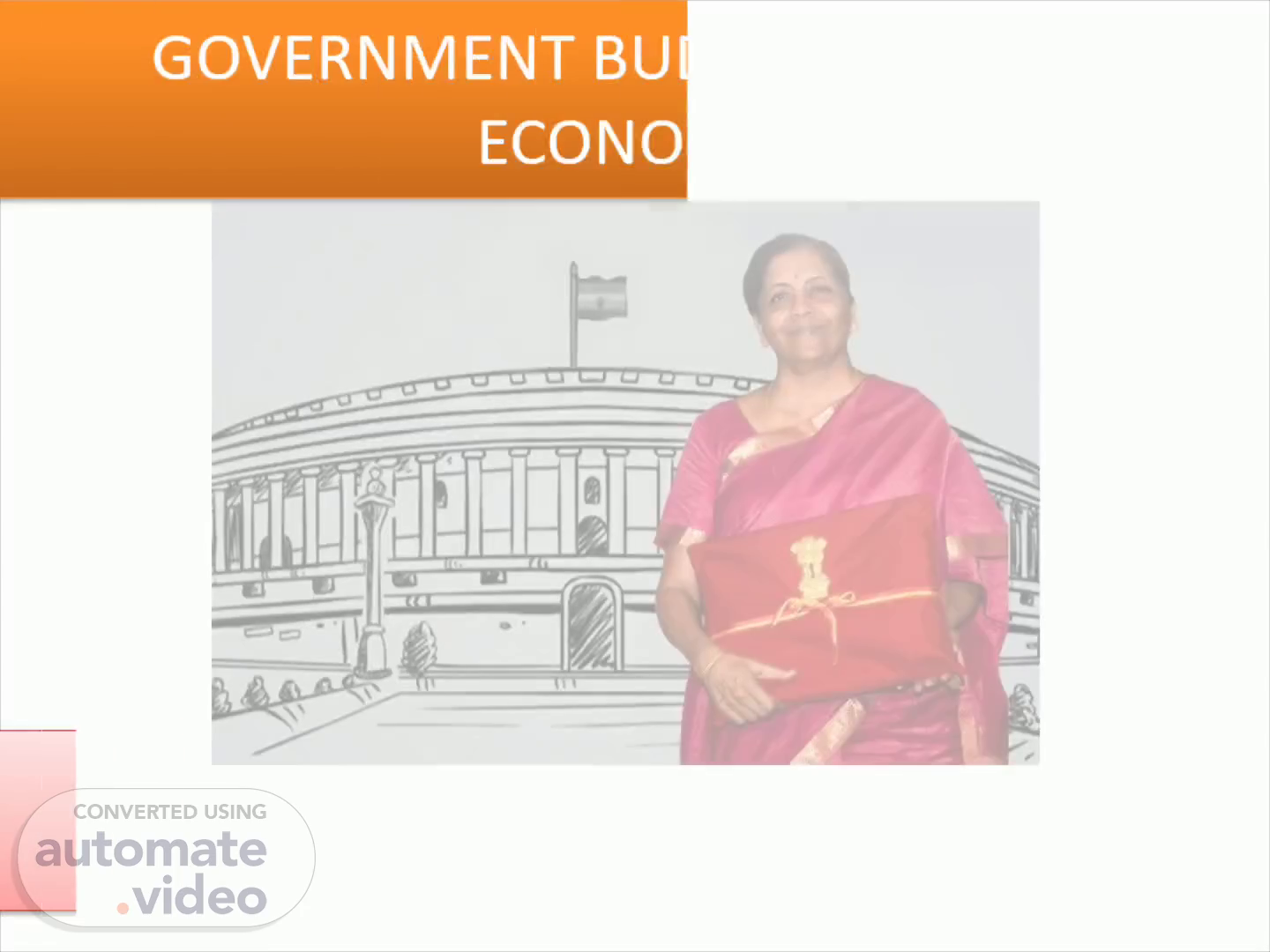
GOVERNMENT BUDGET AND THE ECONOMY
Scene 1 (0s)
GOVERNMENT BUDGET AND THE ECONOMY. BY KRISHNA KUMAR C S , PGT ECONOMICS, DAV – BHEL SCHOOL, RANIPET..
Scene 3 (18s)
A government budget is an annual statement of estimated income and expenditure of the government during a financial year..
Scene 5 (35s)
ESTIMATED RECEIPTS = ESTIMATED EXPENDITURE.
Scene 6 (42s)
ESTIMATED RECEIPTS > ESTIMATED EXPENDITURE. SURPLUS BUDGET.
Scene 7 (50s)
EV NU XPE Dl URE. ESTIMATED EXPENDITURE > ESTIMATED REVENUE.
Scene 8 (58s)
OBJECTIVES OF BUDGET ECONOMIC GROWTH MANAGING STATE OWNED ENTERPRISES GROWTH WITH EQUITY PROPER ALLOCATION OF RSEOURCES.
Scene 9 (1m 8s)
Economic growth Government allocates resources for various development and welfare programmes in its budget. Funds are allocated for the defense of the country. Resources are allocated for educational and health sectors. Resources are allocated for the development of various sectors of the economy. Balanced allocation of resources help in balanced economic growth. Backward areas are given more resources..
Scene 10 (1m 26s)
Role of Government Budget in the allocation of resources (I) The Government can impose heavy tax on dangerous and harmful goods. This will discourage their production. (ii) The Government can provide subsidies to encourage the production of essential commodities. (iii) Heavy tax can be imposed on luxury goods so that their production can be discouraged..
Scene 11 (1m 43s)
ECONOMIC EQUALITY The Government may impose heavy tax on rich man’s income and luxury goods. Progressive rate of taxation can be followed. Poor man’s income and necessary goods may be exempted from taxation. The money collected from the rich can be used for various welfare programmes for the poor people. Food can be supplied at low rates. Educational and health services can be developed..
Scene 12 (2m 2s)
ECONOMIC STABILITY Economic stability can be achieved by controlling inflation and deflation. During inflation, the Government can prepare a surplus budget. Taxes can be increased and expenditure can be reduced. This will reduce money supply and help in controlling inflation. During deflation, the Government can prepare deficit budget. Taxes can be reduced and expenditure can be increased. This will increase money supply in the economy..
Scene 13 (2m 22s)
Management of Public Enterprises: Allocation of funds for the public sector enterprises is done through the budget..
Scene 14 (2m 31s)
STRUCTURE OF GOVERNMENT BUDGET.
Scene 15 (2m 39s)
REVENUE RECEIPTS. RECEIPTS THAT DO NOT CAUSE LIABILITY TO GOVERNMENT.
Scene 16 (2m 50s)
CAPITAL RECEIPTS. RECEIPTS THAT CAUSE LIABILITY TO GOVERNMENT.
Scene 17 (3m 1s)
REVENUE EXPENDITURE. EXPENDITURE THAT DOES NOT REDUCE THE LIABILITY OF THE GOVERNMENT.
Scene 18 (3m 11s)
CAPITAL EXPENDITURE. EXPENDITURE THAT REDUCE THE LIABILITY OF THE GOVERNMENT.
Scene 19 (3m 21s)
a. Receipts from sale of shares of public sector undertaking. It is a capital receipt because it results in the reduction of assets. b. Borrowing from public This is a capital receipt because it increases the liability of the government. c. Profits of public sector undertakings: It is a revenue receipt because profit doesn’t create a liability or reduce assets of the government. e. Disinvestment . This is a capital receipt because it reduces the assets of the government..